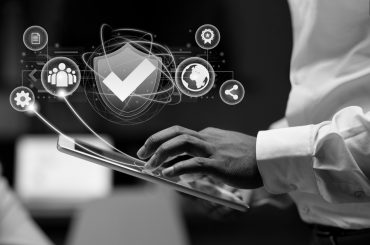The technological revolution has been taking place since the turn of the 21st century. Every year, new tech trends emerge and take the world by storm. It is important to stay ahead of the curve and be prepared for the future of technology. By understanding and embracing these tech trends, businesses and individuals can prepare themselves for the future and stay ahead of the competition.
In 2023, we can expect to see companies continuing to leverage various technology trends. That would help them access new and innovative technologies and drive efficiencies in their operations and processes. Here’s a list of some of the technology trends that will have the most impact.
1. AI Everywhere
In the last few years, Artificial Intelligence (AI) has been the technology trend that has been the talk of the town. One of the most ubiquitous trends in 2023 for SMEs (small and medium-sized enterprises) will be the adoption of AI as a service. No-code AI, with its easy drag-and-drop interfaces, will enable any business to leverage its power to create more intelligent products and services from healthcare to retail, finance, and beyond. AI will be able to automate mundane tasks, analyze data faster and provide more personalized experiences to customers.
Top players in the content creation industries will drive AI-driven technologies in 2023:
- Adobe has launched its 2023 update to Photoshop and Premiere elements, which includes many AI-driven features.
- In 2023, Meta will launch Make-A-Video to ease AI-driven video production. The industry for content creation will be revolutionized by its use of AI, as was the case with GPT-3’s AI-driven writing in 2020.
Artificial intelligence is expected to be more useful in the future, so more testing will be required to confirm its data integrity. A term called “modelops” has been coined by Gartner to describe the governance requirements of AI lifecycle management.
2. A Big Leap in Metaverse
Every conversation about the future of technology seems to revolve around this trend. In 2023, parts of the Metaverse will become real as more and more people join the virtual world.
Economic growth in this environment is expected to reach $800 billion by the middle of this decade and $5 trillion by 2030. Despite the difficulties Meta is experiencing in shaping its plans, the metaverse could offer excellent opportunities for companies as it pertains to social presence, remote work, payments, healthcare, or product exchange.
Companies are already using metaverse technologies like AR and VR to improve their products, create different brand images, or collaborate with their consumers. For instance, Consulting giant Accenture has already created a metaverse environment called the Nth Floor where it conducts training and onboarding, and this trend will speed up in 2023.
Within Industry 5.0, the industrial metaverse brings great hopes. Many applications exist, including capturing and digitizing reality, understanding and enriching data in virtual environments, as well as optimizing the cost of achieving sustainable objectives.
It is still a long way to see this hybrid digital universe that combines virtual and physical reality. But, we have already started to see some of its capabilities, including how we will work, shop, and have fun. 2023 is seen as a pivotal year for the metaverse, as it is expected to lay the foundations for its growth.
3. Progress in Web3
In 2023, we will see significant progress in Web3 as more and more people start to use it.
Web3 will be used for a variety of things such as digital identity, digital payments, and smart contracts. For example, we’re currently storing everything in the cloud – but if we decentralize data storage and encrypt that data using blockchain, our information will not only be safer, but we’ll have more innovative ways to access and analyze it.
Non-fungible tokens (NFTs) will become more popular and useful in the new year. For example, NFT tickets to concerts could give you access to backstage experiences and mementos. NFTs might be the keys that enable us to interact with many digital products and services we buy, or they might represent contracts we sign with third parties.
4. Blockchain to Enable Trust
The traditional way of conducting online payments between two parties involves going through an intermediary that verifies the data through a centralized system. However, with the advent of blockchain technology and its decentralized model, control is taken away from a central organization, and data is stored in a more secure, encrypted way.
This shift to decentralization creates new opportunities for transactions, communication, and doing business. It also facilitates automation, which results in a huge increase in digital property.
As per Gartner, blockchain is a growing technology that is forecasted to have a commercial value added of over $176 billion by 2025. It has been used in the financial sector or with cryptocurrencies but is now being implemented in many other sectors. Blockchain creates new business ideas, speeds up transaction verification, prevents fraud and cyber-attacks, and is highly efficient, reliable, and secure. In the coming years, it will be crucial for businesses to improve data tracking, create new billing systems, host patents, track sales processes, and protect medical data using blockchain technology.
5. IT as a service
A large portion of companies rely on managed services in addition to building in-house resources today. Despite the economic crisis, technologists are working on continuous innovations and efficiency improvements. As per industry analysts, the IT professional services market will grow at a CAGR of 11.2% from 2022 to 2030.
To maintain stable growth and deliver improved services at a pace, companies will begin to outsource heavily. This allows them to get access to a wider talent pool and augment their existing development team. Deqode can establish your software development team helping you stay profitable and agile. We have 8+ years of experience in decoding today’s business challenges by providing custom engagement models to hire talent.
By choosing Deqode as your outsourcing partner in India, you get the right value for money that works wonders for your business. You can also check our case studies to see how we’ve helped businesses unlock their potential by offering skilled resources, technology, and guidance. Our IT outsourcing services allow you to hire dedicated squads and team members for mobile and web development, cloud, blockchain, and business process management.
6. Multi-Cloud Adoption
If 2022 was the year of hybrid cloud, then 2023 could be known as the era of multi-cloud. This method provides greater adaptability and safety, preventing organizations from being too dependent on one platform – an issue that may arise if cloud service providers alter their supported programs or discontinue them altogether. As a result, it reduces the chances of critical business failures caused by system errors or downtime.
Adopting a multi-cloud infrastructure implies moving away from strategies that could be detrimental to business, such as concentrating applications and operations around one particular cloud platform, for example, AWS, Google Cloud, or Microsoft Azure. The increasing prominence of containerized applications signifies that in the event of alterations to service levels or more cost-efficient solutions being available from different suppliers, applications can swiftly be transferred to new platforms. It has been reported that in the year 2023, approximately 84% of medium- to large-sized businesses will have implemented a multi-cloud methodology, making it one of the most prominent trends in cloud computing. This is a stark contrast to 2020 when the majority of companies (70%) were devoted to one single cloud provider.
7. Green Technology
One of the most pressing challenges the world is currently facing is reducing our carbon footprint in order to combat climate change. In 2023, we can expect to see further progress in green hydrogen production, a new environmentally friendly energy source that can easily replace the current energy sources.
Recently, we have seen various companies take significant steps in their businesses to lower the rising CO2 emissions and put focus on migrating to the cloud and optimizing and automating the processes.
It is possible to create a greener and more sustainable future without sacrificing efficiency or business growth thanks to technologies such as artificial intelligence, blockchains, cloud computing, or robotics.
Read how we’re helping the biggest environmental giant in the world process 23.7 Million GB of data to take smart business decisions.
8. More Sustainable Technology
It also made our list of technology trends for 2023, and no wonder, since it encompasses many other trends. Most of us (if not all) are addicted to technology like our smartphones, tablets, and computers – but where do the components for these devices come from? People will be reflecting more on the origins of rare earth materials for items like computer processors, and how we utilize them.
By 2023, customers will continue to press for greater visibility in supply lines, expecting the goods and services they purchase to be energy-efficient and underpinned by more eco-friendly technology.
9. IoT for Hyperconnectivity
We are seeing a time when IoT sensors and networks of interconnected devices have become a key element to creating digital twins, building the metaverse, improving the operation of smart machines, or designing future cities.
There are more and more smart devices in our personal and professional lives, but until now we have faced some communication issues due to different platforms or operating systems. Therefore, 2023 will be the year to develop worldwide standards and protocols to communicate more effectively.
IoT technology collects and interprets data collected by industrial machines and then provides information about the process to improve efficiency, save costs in production, detect new business opportunities and consumer trends or promote product innovation.
We are only in the early stages of what can be achieved with IoT, as forecasts suggest that some 50 million IoT devices will be in use by 2023. This will create a massive network of interconnected devices that will provide greater security, efficiency, and decision-making for businesses as more data is collected and analyzed.
10. Investments in Robots and Automation
Given the increasing cost of labor, companies are investing more in automation. The amount of money spent on industrial robots is expected to increase significantly in the next decade. By 2030, spending is expected to be double than what it is currently. Automation projects have been slow to implement, due to issues with the supply chain (particularly in Europe) and a shortage of engineers.
Now, attention is shifting towards “cobots” (robots that work alongside humans) in warehousing and other environments, to replace boring, laborious, and unsafe activities. In September 2022, Elon Musk showed off two prototypes of Tesla’s Optimus humanoid robot and said that orders would be taken within the next three to five years. Soon, we may be able to have robot butlers who can help around the house by lifting items and watering plants.
Conclusion
These technology trends can’t be beaten overnight, but you can start by asking simple questions today. Do you have a multi-cloud architecture that drives the right outcomes for your business? Do you have the right talent to scale your business and drive innovation?
One way to begin is by accepting as-a-service models that allow you to pay for what you need and when you need it. Hiring a smart team to develop modern infrastructure and manage workloads in this world is forward-thinking today. For more information, you can connect with our team here.





